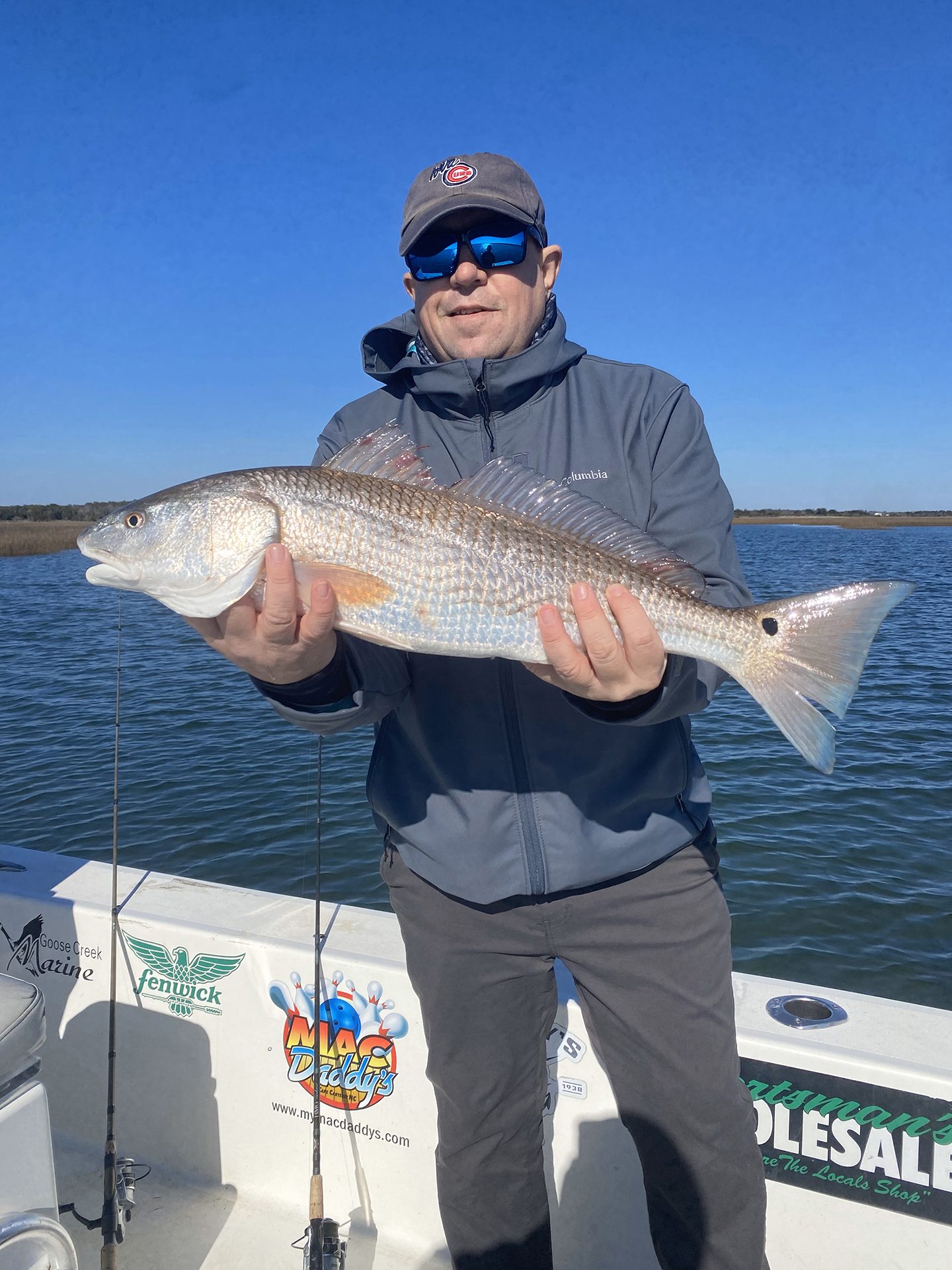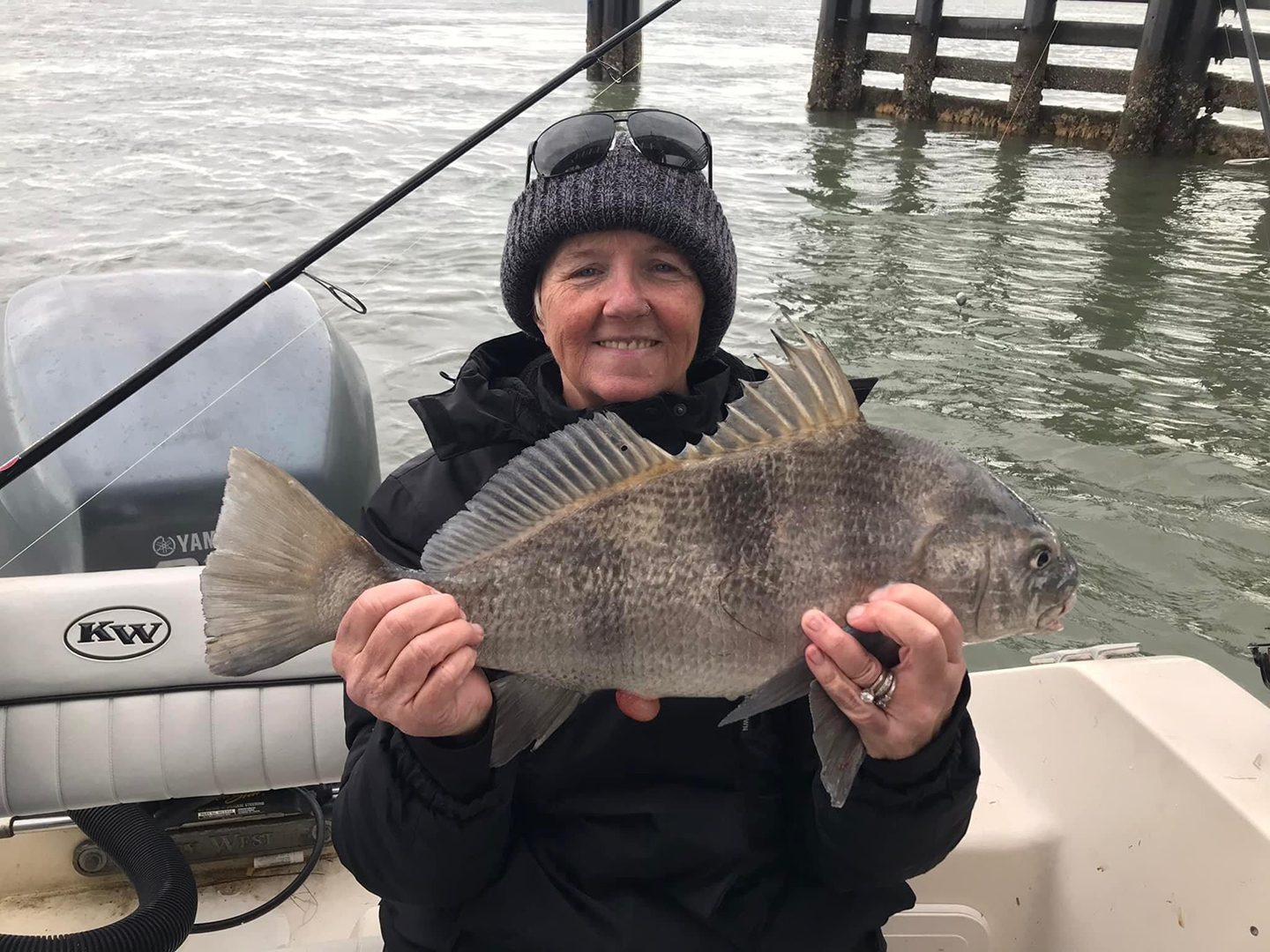Swansboro/Emerald Isle – March 2024
Morgan, of The Reel Outdoors, reports that anglers fishing the backwaters have had good success with red drum schooled up throughout the area.
Speckled trout remain tucked away in their wintering creeks as they await warmer waters.
There’s been a surprisingly good bite on sheepshead for those targeting the docks and bridges.
Anglers in the backwaters are seeing schools of menhaden showing up, which could hopefully translate to some strong early spring fishing.
Surf anglers are catching dogfish sharks and pufferfish.
Getting out to the nearshore wrecks and reefs is producing some good black sea bass action.
As these water temperatures move up through March, the area could see some bluefish show up, with even an outside possibility of early spanish mackerel (if conditions work out).
Rob, of Sandbar Safari Charters, reports that as we move into March, anglers will be chasing the large schools of redfish in the marshy backwaters. Look for soft, muddy bays and shallow creeks near the inlet to be holding these fish. Anglers will do well casting small, scented soft plastic paddle tails on a weedless worm hook. This setup can help avoid snags with all the slime moss that is so prevalent this time of year.
Black drum can be found in these same areas, and they’ll be feeding on cut shrimp fished on the bottom.
Some speckled trout are making their way to the mouths of smaller creeks as they get ready to migrate out into open water.

Chris Hayes, of Wilmington, landed this 27″ red drum in a creek near Swansboro using a live mud minnow on a drop shot rig. He was fishing with Capt. Rob Koraly of Sandbar Safari Charters.
Matt, of Friendly City Fishing Charters, reports that red drum are all over the place, and these fish are still moving around in their wintertime schools. Anglers are finding these fish by just cruising around the clear waters on the trolling motor. The best tactic is to keep at a distance before casting at fish to avoid spooking them.
Dead-sticking tactics with soft plastics and cut baits are producing most of the strikes. Size-wise, these early spring schools usually have a bunch of mixed sizes in one group. This changes as fish break out and then usually travel in groups of similar size.
Black drum are in holes throughout the marsh systems or staged up around hard structure. Smaller Carolina rigs with shrimp will be the best setup for targeting them. Don’t spend too much time at one spot, though. If the fish are there, typically they’ll feed almost right away.
John, of Early Riser Fishing Charters, reports that nearshore anglers finally have a little something to look forward to by late March. False albacore will be showing up in the 10-mile range, and typically these early fish are active feeders. If not on the surface, drop back some planers with spoons and watch your machine for bait suspended over rocks and wrecks.
Inshore, anglers have been finding speckled trout holding in deep creeks off the river all winter. The cold water has really made the bite hit-or-miss, with the fish being selectively active based on weather patterns. Sub-surface hard baits have been the best bait overall, with soft plastics also working well when fished deep on the sunniest of days.
Red drum have been holding in large schools throughout the marsh. By this time of the year, the reds can be really spooky, so this requires that your approach be stealthy (even scouting schools days before fishing them to know where you need to set up and not startle them). Scented jigs fished dead-sticked or soaking cut bait will give the best chance of strikes.

Donna Taylor, of Tar Heel, NC, caught her personal best 27″ black drum while fishing the Morehead Bridge using fresh shrimp. She was with Capt. Lee Winkleman of Top Gun Fishing.
Tyler, of Drumroll Charters, reports that inshore anglers are still doing well catching red drum and the occasional speckled trout. The redfish action is mostly back in the marshes, with fish still holding in their wintertime schools.
Speckled trout are holding way back in the mainland creeks, and they’re waiting for water temperatures to move up before they start moving.
March usually sees the arrival of Atlantic bonito off our beaches, and these are great-eating fish that are a blast to catch on both casting jigs or fly setups.
Tony, of Fin FinderZ, reports that anglers are looking forward to the springtime bite kicking off in March. The area hopes for Atlantic bonito, bluefish, and false albacore to show up.
If water temperatures warm up quickly, the area could see some spanish mackerel mixed in as well.
The deeper wrecks, in March, will start to see amberjack move in over them.
Some wahoo have been caught by anglers making the trip out to the break, and this bite should continue.
